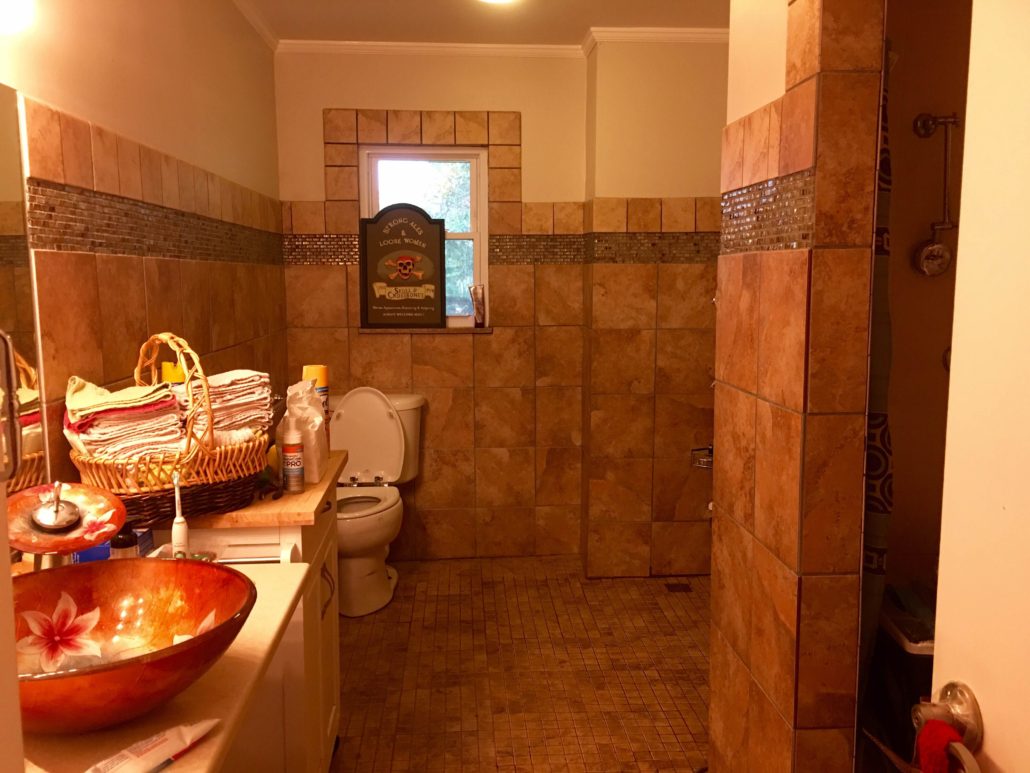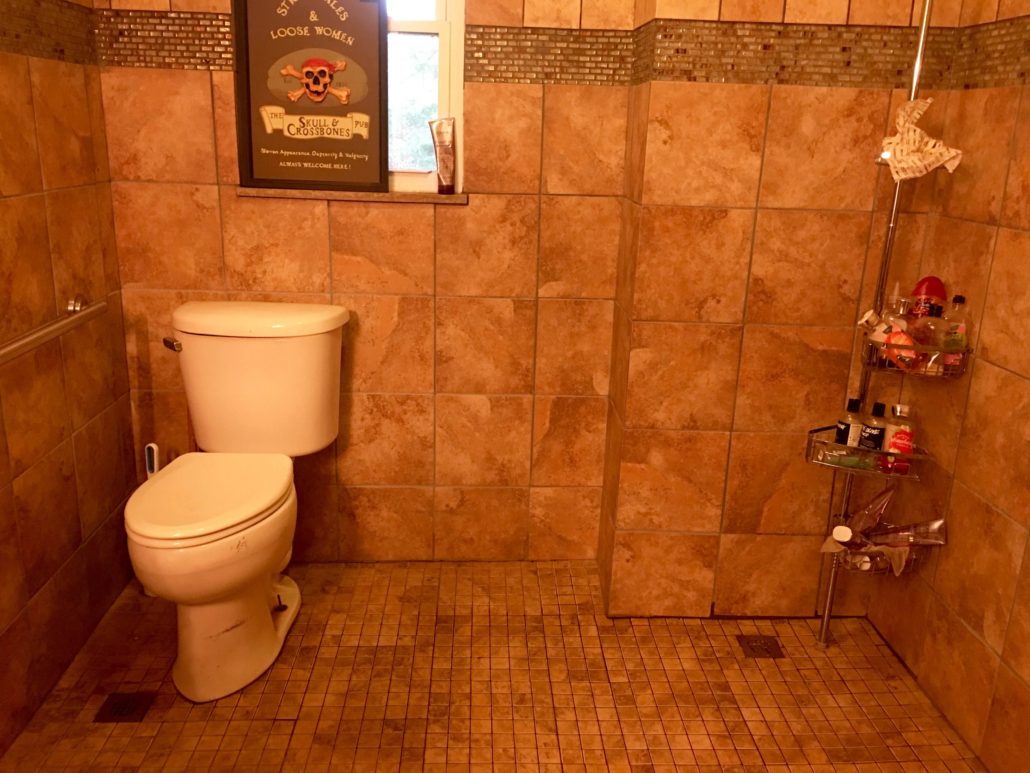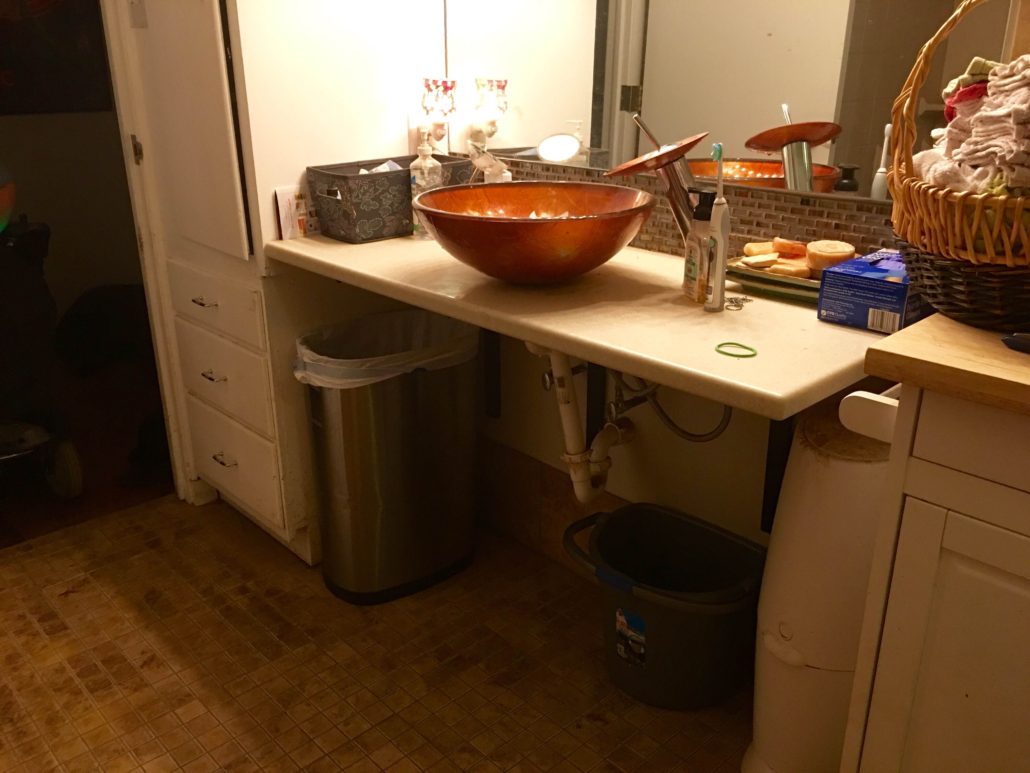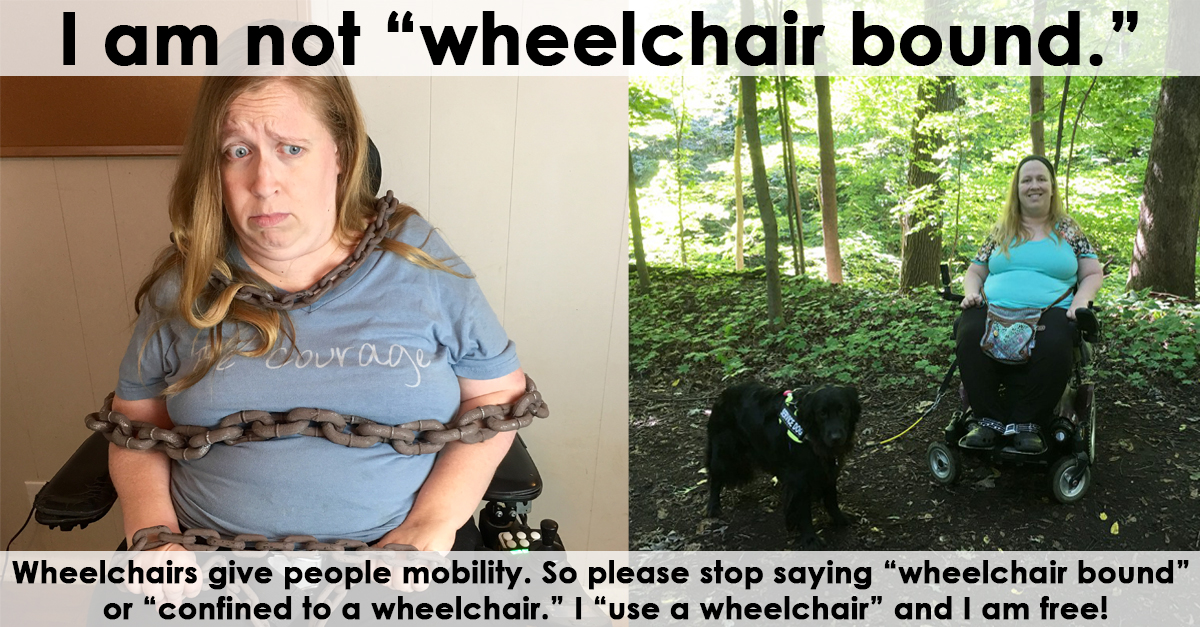
Overall view of my “wet bath” style wheelchair accessible bathroom.
Designing a Wheelchair Accessible Wet Bath
People with and without disabilities often ask me about bathroom accessibility. They’re curious about how I made my home wheelchair accessible, and how they can make life easier for themselves or their loved ones with disabilities. The bathroom can be a sensitive topic, but in my experience, it’s the most important room to make accessible in terms of safety, independence, and health. So let’s talk about how to make your bathroom wheelchair accessible with a wet bath style shower.
As a person with a disability who has moved several times and traveled extensively, I have seen and used numerous different accessible bathroom designs. I have experienced both the benefits and limitations of various accessible public restrooms and hotel restrooms, and I always knew I wanted to come up with a better way to make my own bathroom wheelchair accessible.
When I moved from Los Angeles to San Diego in 2007 and bought a house that needed a significant wheelchair accessible bathroom remodel, I decided to try a new idea: the wet bath. It worked so well that when I faced an unexpected move in 2014 after being attacked in a home invasion, I knew I would need a similar design. So when I renovated the bathroom of my new home, I turned it into a wheelchair accessible wet bath, and it has once again worked out great.
People with physical disabilities are a diverse community with very different needs. However, I believe the wet bath design would benefit people with a wide array of conditions and make life easier for them and their caregivers. I’d like to share photos and explain the benefits and drawbacks of a wet bath remodel for disability accessibility. Here are some answers to common questions I get about my wheelchair accessible wet bath.
Note: This page contains affiliate links. As an Amazon Associate I earn from qualifying purchases.
What is a wet bath?
A wet bath is a bathroom where part or all of the room is designed to accommodate water. These areas are larger than a typical shower and the walls are protected from water damage with tile or fiberglass. The floor is typically tile with concrete underneath, but stamped concrete or metal floors are also an option.
Is this a new idea?
Not really. Wet baths are often used in small RVs, and they are also more common in Europe and Asia where bathroom space can be limited. However, they have been very underutilized as an option for disability access.
Is a wheelchair accessible wet bath possible in small bathrooms?
Yes! This remodel is great for smaller bathrooms, because it allows you to roll a wheelchair into the space that would otherwise be occupied by a shower stall.

It’s essential that an accessible bathroom have space to park a wheelchair next to the toilet.
Why is a wet bath better for wheelchair access than a roll-in shower?
If you have ever used a roll-in shower, you probably know that they tend to leak. Even with a curtain, water easily flows over the floor barrier and can flood your bathroom because it has no place to go. With a wet bath, there are multiple drains in the bathroom, so when properly installed, the water just flows out.
Transferring is easier with a wet bath. You can scoot from your wheelchair to the toilet or shower bench and stay where you land, rather than having to slide over into a shower, lift your legs over a tub, or use a shower bench with a sliding seat.
Can I shower on the toilet in a wheelchair accessible wet bath?
If you have a standard toilet, in my experience, yes — I do every day! However, you don’t have to. You could also place a shower bench in the wet bath area. Having a wet bath makes it easier to do quick refreshes or cleanups on the toilet, regardless of whether or not you typically shower there.
How do I shower on the toilet or a bench if it’s far away from the shower head?
A hand-held shower wand will solve this problem easily. If the distance is farther than the length of a typical hose, you can order a longer hose online. If you like to have a shower above your head, you can mount multiple attachment points around the bathroom to accommodate your needs and those of others in the household.

The shower area with panel to create a soothing experience.
Can able-bodied people use a wet bath designed for wheelchair accessibility?
Sure! Since I had to tear out my bathtub, I wanted to make sure that the experience for able-bodied people was still great. I purchased one of those shower panels that has a hand-held shower as well as several adjustable body sprayers. People think these are very expensive, but they are quite reasonable on Amazon and well worth it in terms of adding value to your home. One of my favorite features of my shower tower is the temperature display. My assistant and I can see how hot or cold the water is and it ensures I will always have a safe, comfortable shower.
Where does my wheelchair go when I shower?
The wheelchair should be rolled out of the wet bath area and placed either on the other side of a curtain or outside the bathroom.
Can this design be used with a Hoyer lift / hoist?
My assistants do manual transfers, so I can’t completely answer this, but a hoist could be rolled in and out of a reasonably-sized bathroom with no problems. I have never had water hit the ceiling, so I think a ceiling track hoist would be OK as long as you move it out of the wet bath area while showering.
What about the sink?
There are several options for the sink area. In a very small wet bath, such as those found in RVs, the sink is also designed to withstand water. However, in most bathrooms, a shower curtain is used to protect the sink and vanity. In my current bathroom, the shape of the room naturally protects the sink area. I thought I would need a shower curtain, but I don’t.
I have found that vessel sinks can be great if you have limited hand coordination due to your disability, as they do a good job containing water, soap, etc. I don’t splash my clothing with water or toothpaste as often and my counter is less messy. Many vessel sinks are incredibly beautiful and can be the centerpiece of your bathroom!

My accessible sink with space for a wheelchair to roll underneath.
Are there any disadvantages to a wheelchair accessible wet bath?
If designed and installed properly, no. However, it’s essential to get a qualified professional who understands how to create proper slopes for the water to reach the drains. The floor must be sealed from access to any wood.
Unfortunately, in my first wet bath, the contractor did not properly install the drains and tile, so water leaked into the wood subfloor. Even through the tile, we could feel softness and the floor sinking slightly under the weight of a person or wheelchair. I had to hire someone to completely redo the whole floor and replace the subfloor, which had rotted, with concrete. In my current bathroom, the subfloor is concrete, so this isn’t a concern.
If you have any issues with water pooling in the wet bath, it’s important to push it to the drain so it doesn’t stand and lead to mildew or subfloor damage. I keep a squeegee in my bathroom and after each shower my assistant spends 1 to 2 minutes pushing any remaining water to the nearest drain. I also keep my bathroom fan running for a few hours after showering.
If I ever move or remodel another bathroom to be wheelchair accessible, I would install multiple linear drains in the floor. A linear drain can collect water from a larger area and is highly effective at keeping water in the wet room section of the bathroom. When properly installed, a linear drain can provide a smoother surface for wheelchairs than a standard drain.
Is a wet bath remodel more expensive than installing a roll-in shower?
It really depends. For new construction, it wouldn’t be more expensive, but it may or may not be for remodeling an existing bathroom. In my last two houses, the bathrooms needed a full remodel including replacing all the floor tile and the sink, so it didn’t really cost more to set it up as a wet bath. I strongly believe that it’s important to create the best access you can to meet your needs.
If you are receiving funding for remodeling, it shouldn’t be difficult to write medical justification as to why you would need the wet bath over other options. If you are employed, remember that home modification costs can be deducted from your countable income for purposes of receiving Medicaid, SSDI and other benefits.
I have another question you haven’t answered.
Feel free to email me. I am not an architect or contractor, but I am always happy to help people design an accessible bathroom that meets their needs.
Last update on 2025-04-18 / Affiliate links / Images from Amazon Product Advertising API



















